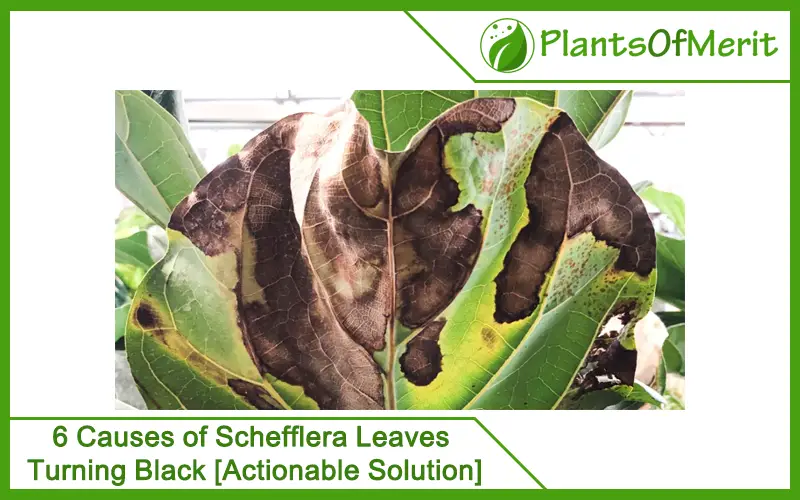Schefflera plants are famous for their umbrella-like leaves which are glossy and green in color. But, if you’re noticing black spots on these leaves, this simply means that something is wrong with your Schefflera plant. Several factors can cause damage to your Schefflera plants like fungi attack, overwatering, and a lot more.
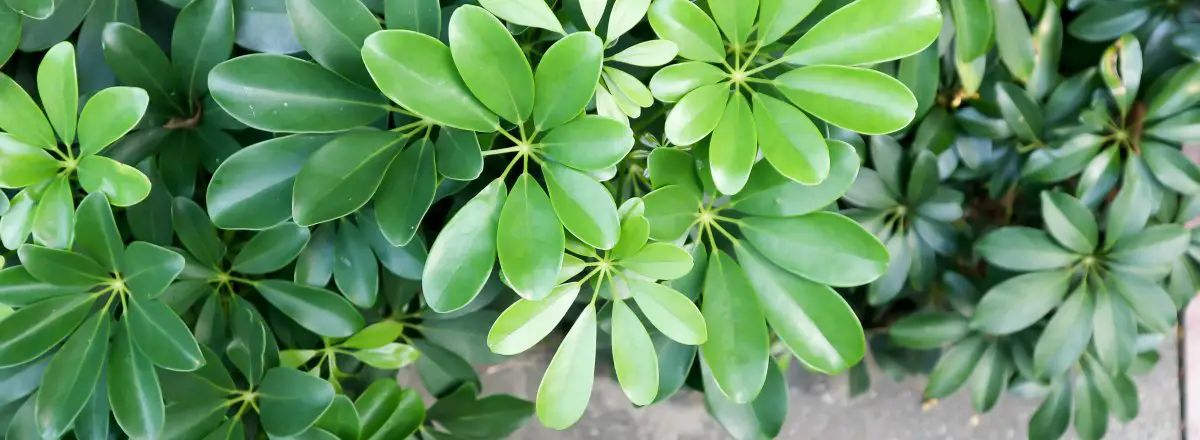
If you’re having a Schefflera plant at home, you must take proper care of the plant. Even the slightest negligence may cause damage to the plants. Black spots on leaves are a sign of the unhealthiest plants. There are many causes why the leaves of your Schefflera plant may have black spots. This post will further guide you on a few causes along with the required solution.
Why Schefflera leaves are becoming black?
There can be many reasons why Schefflera leaves become black. If you’re wondering why, here are some of the main reasons responsible for this phenomenon:
1. Frost or cold attack
In areas that have temperatures lower than 8-10°C, tolerance becomes difficult for the Schefflera plants. Frost attacks can cause the leaves of this plant to turn black. Just like the rest of the plants, Schefflera plants have a particular temperature requirement at which they can thrive best. The best temperature for these plants to grow is 15.5 to 16.6 °C. It is a plant best suited to temperate regions.
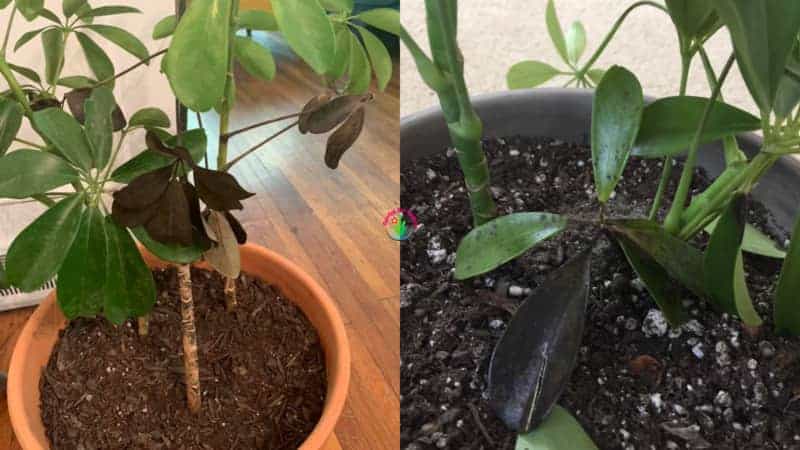
If these plants get a minimum temperature than what they need, it will stop stomata from working. Stomata carry out the process of photosynthesis. So, the system of food processing will get imbalanced. That’s the reason why the leaves of the Schefflera plant start turning black in some areas.
Solution
You should keep this plant in such a place where it doesn’t get affected by the temperature. If you keep it in a pot or hanging basket, you may keep it in a place full of warmth on extremely cold days. Also, you may have kept your plant previously in a planned way in your garden where the frost won’t be a problem even if you’re living in a cold area.
You must set a proper temperature for the plant within the area that is bounded by the glass. The glass won’t let the cold temperature get inside and thus, your plant will remain protected.
2. Virus attack
The Schefflera plants have lower susceptibility to pathogens. It will also be affected when the virulent pathogens will find the best environment to thrive. Normally, chloroplasts are attacked by viruses. It can affect a part of chloroplast and restrict chlorophyll production in that area. As an outcome, the area where the virus attack takes place gets a pale blackish look.
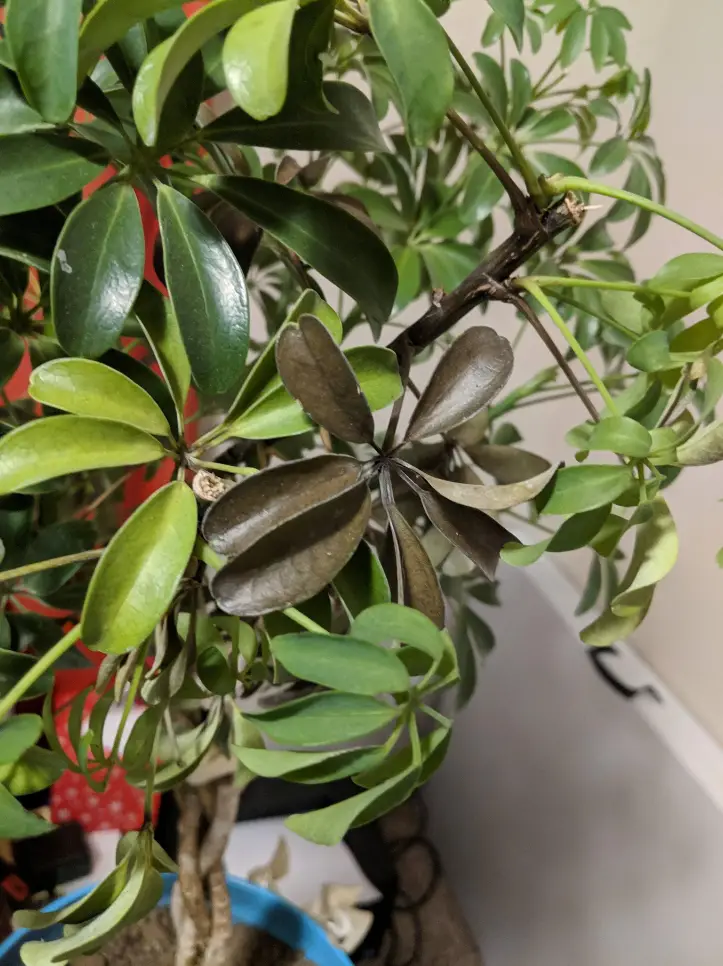
Solution
The best solution to this problem is to protect your plant against virus attacks by creating a resistant environment for your plants. The virus doesn’t attack the Schefflera plants normally; you may protect your plant easily by ensuring suitable water levels and humidity in the soil. Virus attacks can be very harmful to your plants. So, as soon as you find a part of your plant to be attacked by a virus, remove that part immediately.
3. Microbes attack
This is a huge problem for Schefflera plants. Various types of fungi can lead to various kinds of black leaves in the Schefflera plant. Powdery mildew, downy mildew, etc. are problems that are commonly suffered in a Schefflera plant. These microbes can attack your plants in various positions.
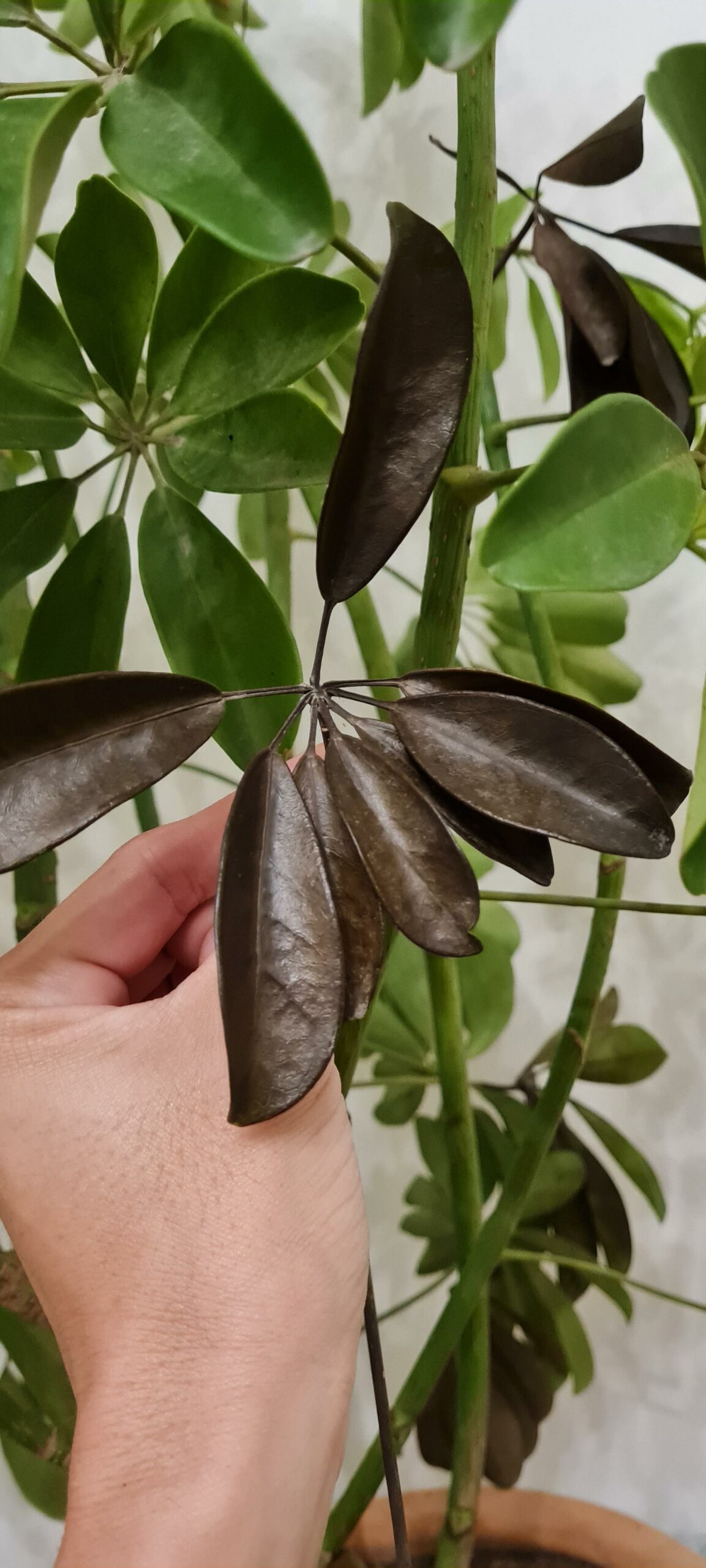
It can affect the leaves of the plant and make them burn. That is the reason why black color is formed on the leaves. Aphid is another kind of microbe that affects the Schefflera plants. It can lead to the formation of black spots on Schefflera leaves. Spider mites can lead to black leaves.
Solution
The best solution to remove downy mildew is using baking soda. If you want the most effective solution, mix 4 tbsp. baking soda in 1-gallon water and apply it to your Schefflera plant. The water treatment needs you to wash the leaves in a heavy stream of water. You can also use pipes, in that case, to promote a water stream to the plants.
4. Bacterial growth
Bacterial attacks are not very common in the leaves of the Schefflera plant. But, it may lead the leaves of this plant to turn black in case of the pseudomonas effect.
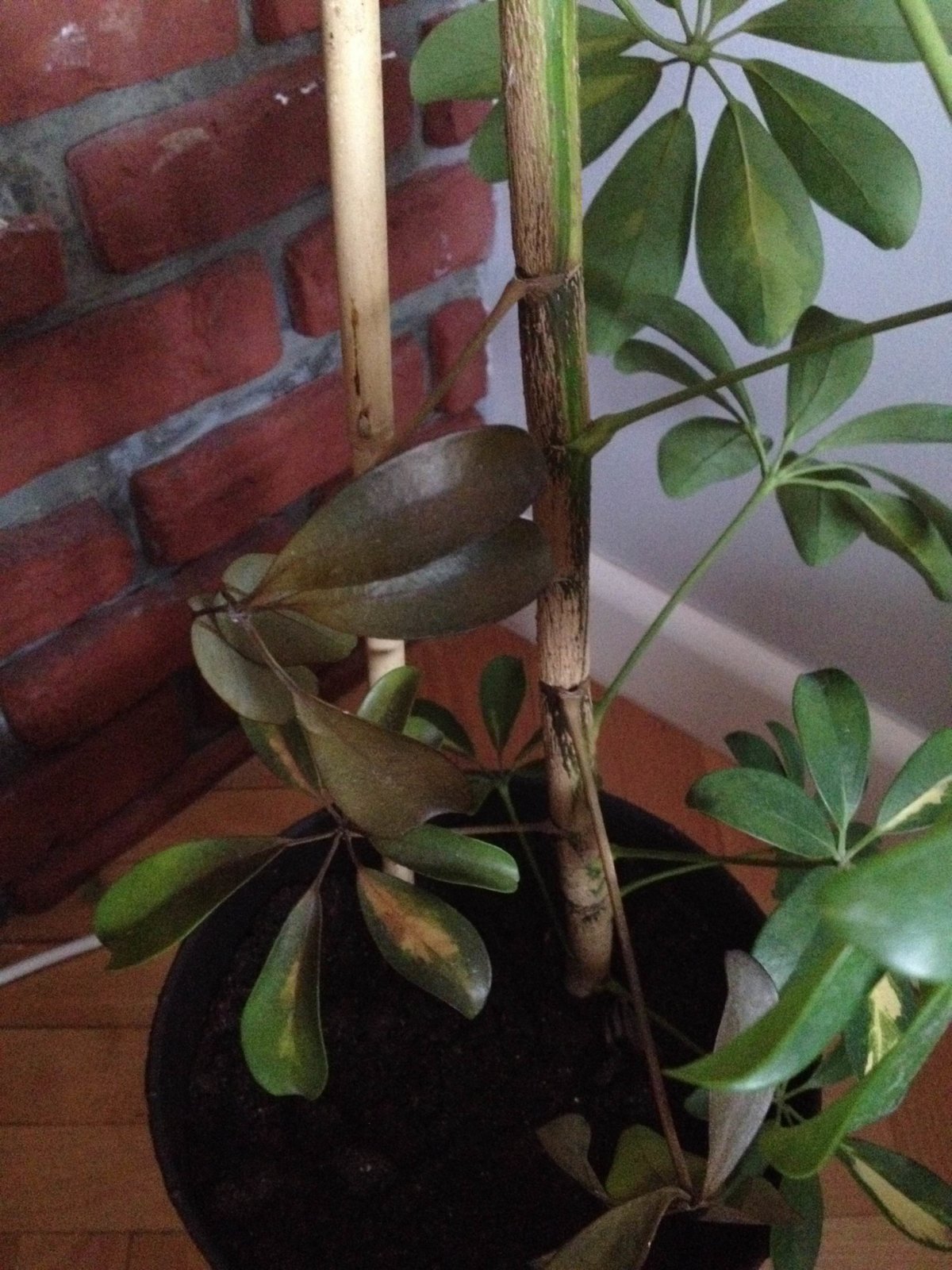
Solution
Remove all affected parts of the plant and stop further infection. The fertilizers required for the plants must be increased when needed. It may add a bit of point to the problem of your plants.
5. Fungi attack
Fungal attacks such as Phytophthora are very uncommon in the case of Schefflera plants. But, if it gets an attack, it will destroy the beauty of your plant and cause its death for sure.
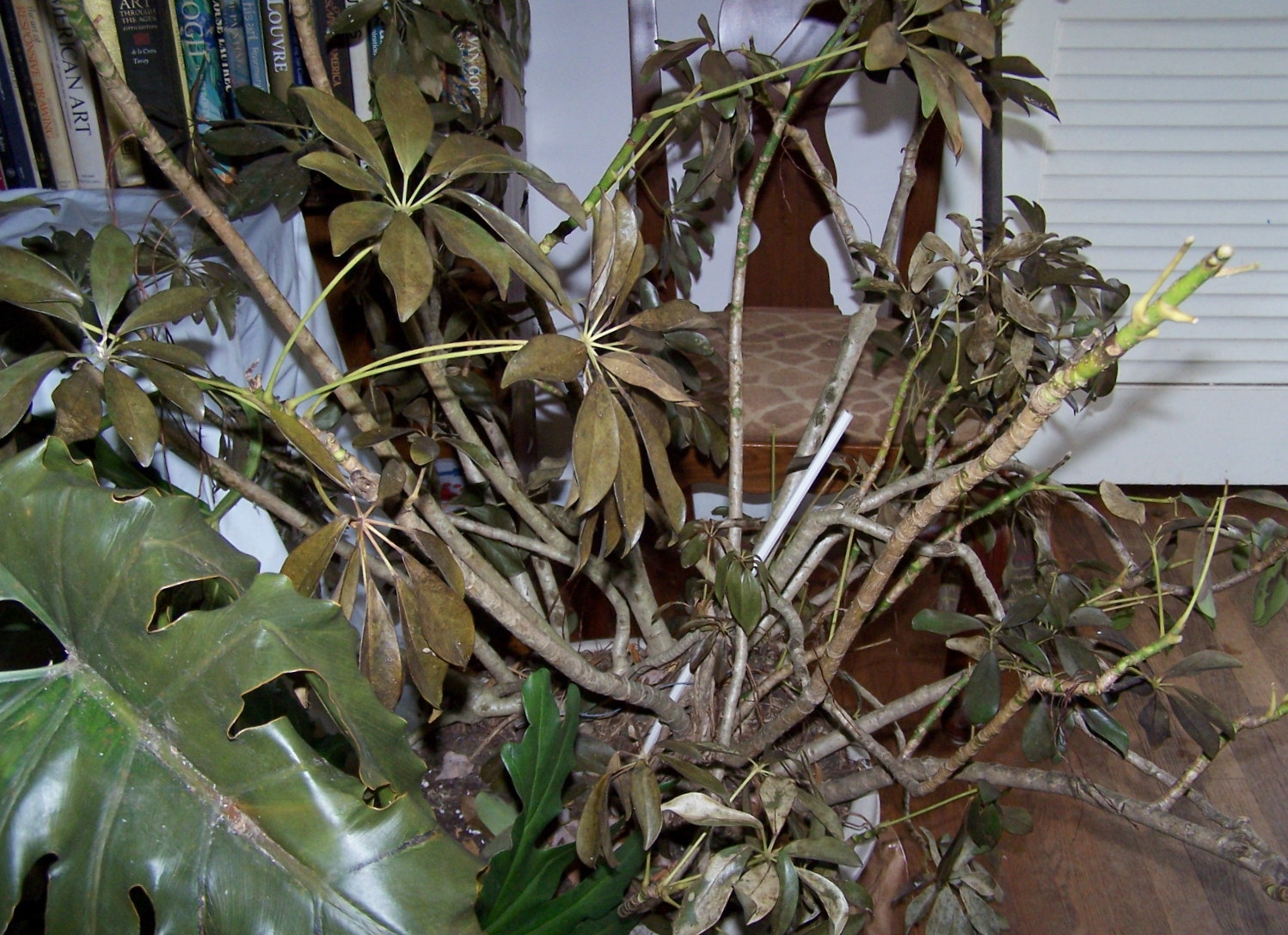
Fungi can attack the roots of the Schefflera plant and also create knots in the root. These roots can also help the plant by offering all required elements and are responsible for the leaves becoming pale.
Solution
Nissodium, Copper fungicide, vitavax powder, sulfur fungicide, etc., are some of the commonly used fertilizers which can help you in removing fungi from your plants. You can also opt for a homemade recipe that is 1 tbsp. Rosemary oil, 1 tbsp.
Put neem oil, olive oil, and peppermint oil in a gallon of water. Apply or spray the Neem oil to infected areas of the plant. You can also try the baking soda recipe in which you have to nix 4 tbsp. Baking soda in 1-gallon water and use it on your plant.
6. Overwatering
Overwatering is the main reason for black leaves to appear. If your plant gets overwatered, the xylem and phloem will get disturbed and there will be root rotting. The vascular bundle is the main way where a plant starts from the root. The vascular bundle system also includes xylem and phloem. Xylem receives water and nutrient from roots and phloem carries it to the various body parts of the plant.
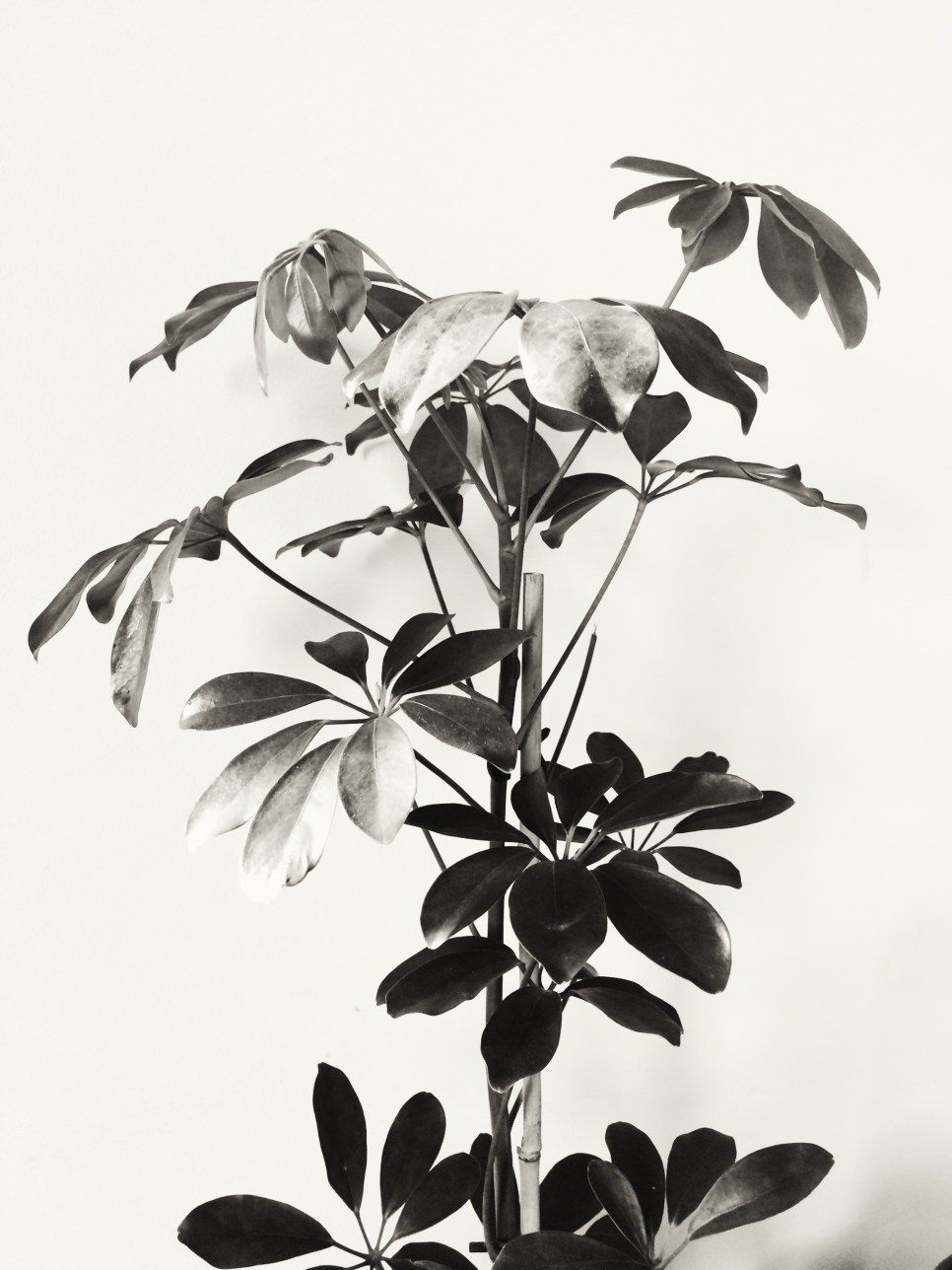
Solution
The best solution to this problem is to check the potentiality of water. Simply the solution can reduce the amount of watering that is needed. Check the water draining potential of soil to check the other conditions of plants using a moisture meter. You can also check the dryness of soil by touching the soul. If you find 50% of the soil to be dry, it requires water. If not, stop watering. There is a term known as reporting. If you find that roots are congested with water, you must consider reporting.
Conclusion
Schefflera is one such plant that doesn’t require a lot of care. It needs a little bit of water, a perfect environment, and fertilizers for the good growth of plants. If you can provide all requirements in the right amount, you must not find any trouble when nourishing the plant. There can be times when the surroundings are not suitable for the proper growth of the plants. You must be careful about all materials.
Avoidance or ignorance of little indication may lead to severe damage to the plants. You just need to check the conditions of your Schefflera plants regularly and take the required measures to ensure suitable conditions for proper growth.

